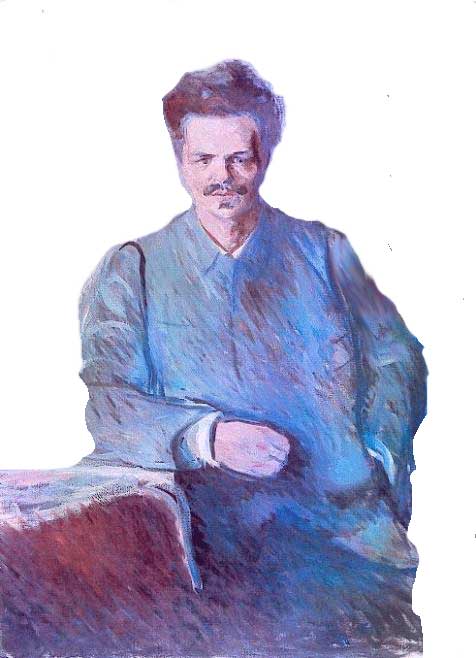|
 More
then a hundred years after his death,
Strindberg’s writing is more than a literary
heritage, his work is still engaged with and
engaging a worldwide audience. His plays are
produced across the globe, new essays and
scholarship on his person and writing are published
every year, and while his contemporaries have
returned to the shadows whence they came,
Strindberg’s name is still vivid in the public
consciousness. More
then a hundred years after his death,
Strindberg’s writing is more than a literary
heritage, his work is still engaged with and
engaging a worldwide audience. His plays are
produced across the globe, new essays and
scholarship on his person and writing are published
every year, and while his contemporaries have
returned to the shadows whence they came,
Strindberg’s name is still vivid in the public
consciousness.
His continuing influence stems not only from his
own contributions - primarily as a playwright – to
world literature, with works such as Fröken
Julie, Fadren, Dödsdansen, Ett drömspel, etc.
(Miss Julie, The Father, The Dance of Death, A Dream
Play, etc.). Nor can his position be explained
by his influence on a number of the most important
artists of the twentieth century; Antonin Artaud,
Samuel Beckett, Ingmar Bergman, Franz Kafka, Eugene
O’Neill, François Truffaut, and others.
Even the breadth of his artistry fails to explain
Strindberg's importance in the contemporary literary
world, although his paintings have received renewed
attention in recent decades and his work commands
seven digit price tags at international auctions.
Indeed, Strindberg held the auction sales record for
a work by a Swedish painter during twenty years from
1990, ahead of such established artists as Carl
Larsson and Ernst Josephson. He was finally
surpassed by Anders Zorn in the spring of 2010.
Strindberg’s writing continues to be important
because it is more than a historical legacy. More
than anything else, his work is present in our
contemporary world because of the force with which
he imbued it. He wrote quickly, intensely, and
filled particularly his prose (novels, essays, and
articles) with a restless energy and anxious pulse.
Sharp attacks and surprising reflextions are
mixed with sections of exquisitely wrought
metaphors. The narrative and the opinions may be
entertaining, amusing, irritating, poignant; but
never bland or indifferent. His books are an endless
and commanding source of inspiration.
Strindberg’s impatience drove him to leave, to
move, sometimes to foreign countries, for new
places, new people and new relationships, always
breaking social bonds. Whether his wandering was
fuelled by longing or discontent, it perfectly
reflected the time he lived in.This was a time that
saw the beginning of modernity in Sweden. Society
was in flux and Strindberg went with the flow. He
participated in the debate on gender equality,
although he alone claimed that men were the
oppressed group. He was a vocal opponent of the
lutheran state church’s control over people’s souls,
and was put to trial for blasphemy. When a modern
media industry was formed he wrote for one of the
major new newspapers, Dagens Nyheter (the
Daily News). As the labor movement developed, he
sided with them and wrote, among other political
pamphlets, August Strindbergs lilla katekes för
underklassen (August Strindberg’s Small
Catechism for the Working Class). Toward the end of
his life, when he was portrayed as an icon of the
labor movement, he had moved on again - always
radical in the original sense of the word – leaving
the political left wing behind and turned religious.
Again he was a pioneer of sorts, leaving
confrontation behind in search of peace and
prosperity, beginning the new social order of the
Swedish Welfare State, ”det svenska folkhemmet,”
where employers and employees built peace and
prosperity together.
It is perhaps appropriate that Strindberg died
before that new order had been fully established. He
was only 63, but the last photographs show him grey
and worn. He had just sold the rights to his books
to Bonniers for an impressive 200,000 SEK (which
ended up being almost 300,000 SEK, over 12 million
Swedish kronor in today’s value). The legacy he left
behind was solid. Within the next 15 years the
publisher had made almost 10 million on his
Collected Works. Strindberg would not have enjoyed
that success wholeheartedly; as Master Olof had
exclaimed forty years earlier: ”It wasn’t the
victory I wanted; it was the fight!”
|